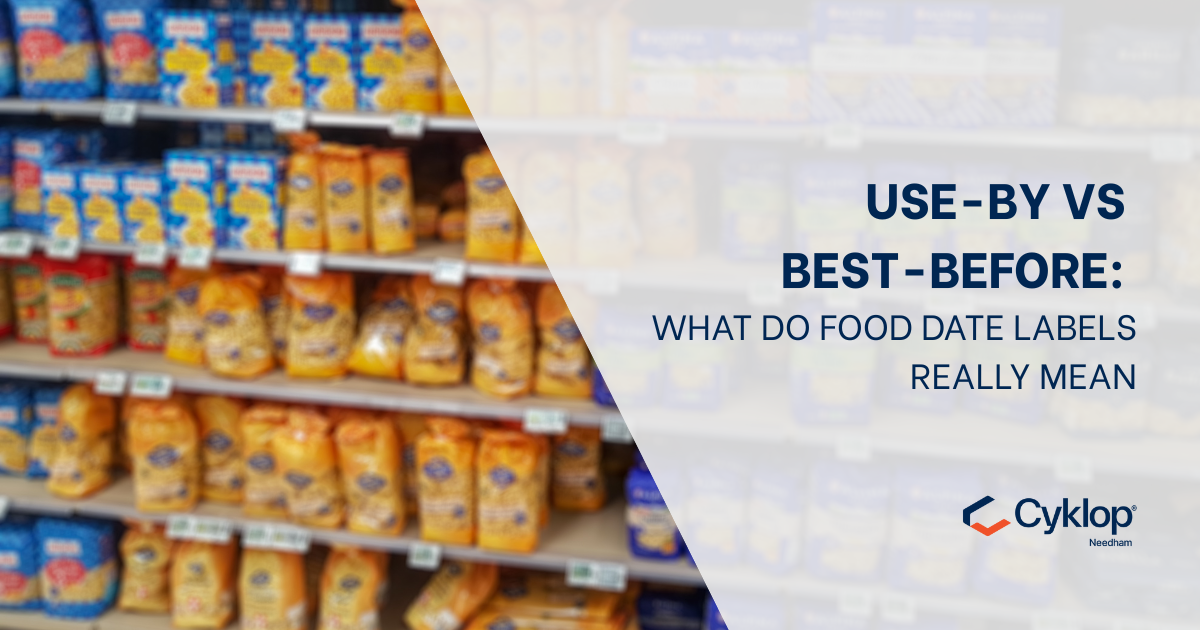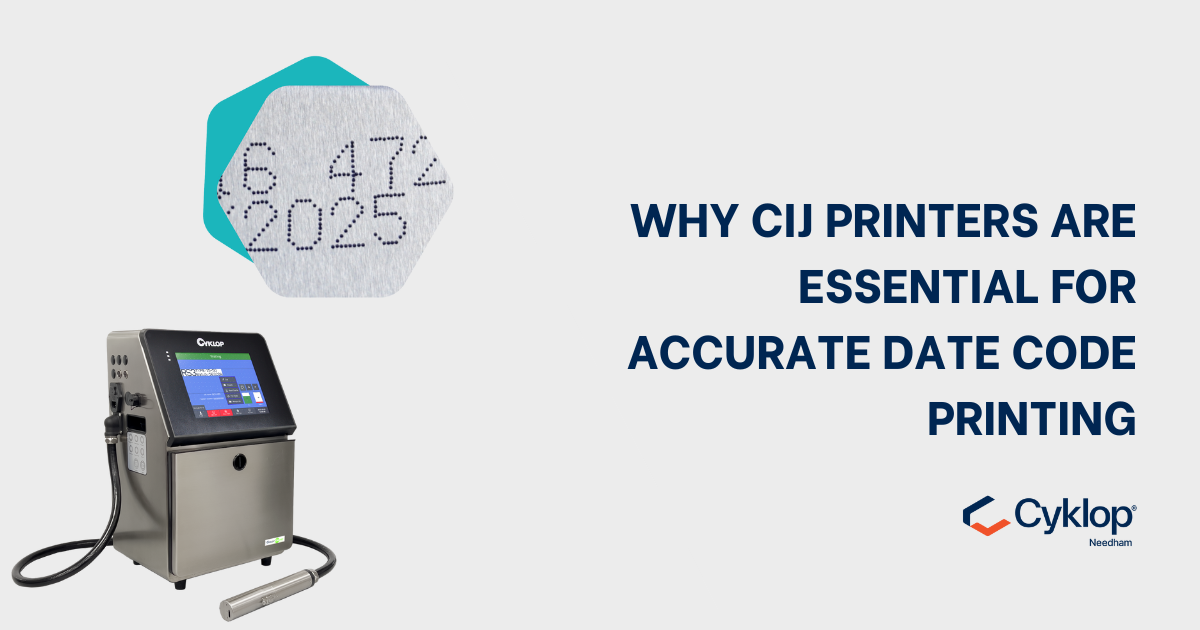Printing for Food & Beverage: The Solution for High-Speed Packaging
The Need for Reliable Coding in Food & Beverage Packaging In fast-paced food and beverage manufacturing environments, precise, high-speed coding is...
2 min read
Samuel Mcgarrigle
Jan 10, 2022 11:44:46 AM

We all check dates when buying food and drink—but did you know confusion over date labelling contributes to billions of pounds in food waste every year?
Retailers like Morrisons have started removing use-by dates from certain products to help combat waste, but you’ll still see best-before, sell-by, or display-until dates on many items.
In this blog, Cyklop Needham explains the difference between these food date codes, why they’re important, and how clear, accurate coding benefits both consumers and the environment.
Food date labels serve different purposes—but the goal is the same: ensure food quality, safety, and compliance.
Best-before dates relate to quality (taste, texture, freshness).
Use-by dates relate to safety (perishability, bacterial risk).
Unfortunately, poor legibility or misunderstanding of these labels is responsible for around 10% of the 88 million tonnes of food wasted in the EU annually.
This makes clear, durable, and accurate date coding essential—and that's where high-performance industrial inkjet printers like our CM750 CIJ system come in.
The use-by date is the most critical of all labels.
It indicates the last day a food product is considered safe to eat. After this date, it should not be consumed, cooked, or frozen, as harmful microbes may have grown to unsafe levels—even if the food still looks and smells fine.
Use-by dates are found on:
Fresh meats and seafood
Dairy products (milk, cheese, yoghurt)
Chilled ready-to-eat meals
Fresh juices and other perishables
These dates are determined through food science and microbiological testing to ensure consumer safety.
The best-before date relates to product quality, not safety. It’s about when the food will start to lose its taste, smell, texture, or appearance—but is still safe to eat.
Best-before dates typically apply to:
Tinned goods (vegetables, fruit, beans)
Dry staples (pasta, rice, flour, lentils)
Confectionery and snacks
Oils, chocolate, cereals
In Europe: eggs (set at 28 days post-lay)
You may also spot sell-by or display-until dates—these are for stock control only and don’t impact consumer safety or quality.
Recognising the difference between use-by and best-before can help you:
✅ Avoid illness – Prevent food poisoning by respecting use-by dates
✅ Save money – Reduce food waste and stretch your grocery budget
✅ Help the planet – Cut methane emissions caused by rotting food in landfills
Many foods with passed best-before dates can still be frozen or repurposed, reducing unnecessary waste. And remember: your nose is often your best guide for freshness!
At Cyklop Needham, we provide coding and marking solutions trusted by food manufacturers across the UK and beyond.
Our CM750 CIJ printer delivers sharp, high-contrast date codes on a wide variety of packaging materials—even in high-speed, high-volume environments.
We also formulate specialised inks to ensure legibility, adhesion, and durability—essential for perishables and chilled products.
Whether you need to print use-by, best-before, or batch codes, we offer the precision and reliability your operation demands.
Let’s Talk About Your Coding Needs
📞 Call: +44 (0)1948 662629
📧 Email: enquiries@needham-ink.com
🌐 Visit: www.needham-ink.com


The Need for Reliable Coding in Food & Beverage Packaging In fast-paced food and beverage manufacturing environments, precise, high-speed coding is...

Industrial Inkjet Printers: A Manufacturing Essential Industrial inkjet printers are designed to apply critical information—such as expiration dates,...

Improve Product Safety, Traceability & Compliance with CIJ Printing In today’s competitive manufacturing environment, product traceability and safety...